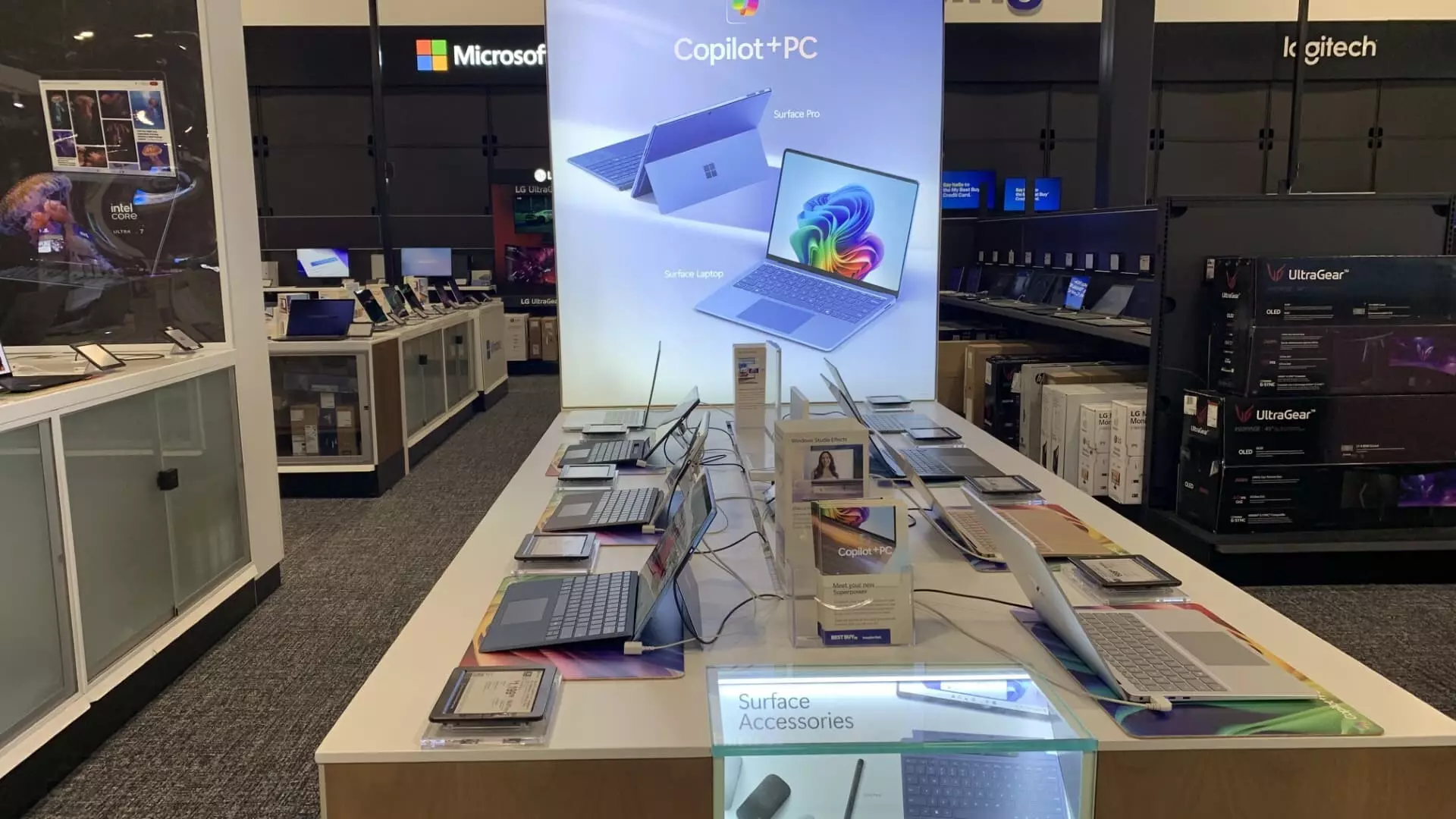In the ever-evolving world of retail, companies must navigate a myriad of challenges that can significantly impact their market performance. Best Buy, a leading electronics retailer, is currently facing a tumultuous environment, characterized by fluctuating consumer behavior, shifting economic indicators, and fierce competition from retail giants. Recent decisions, such as selling off a portion of their shares, highlight the complexities and strategic considerations that come into play for stakeholders monitoring the company’s trajectory.
Sales Performance and Market Dynamics
Best Buy’s stock has seen a marked decline since October, which underscores broader concerns regarding electronic retail sales. Market analysts point to several contributory factors, including apprehensions over the potential imposition of heightened tariffs on Chinese imports due to policies linked to the incoming administration of President-elect Donald Trump. The ramifications of such tariffs could invariably inflate prices and curtail consumer spending on electronics—an essential driver of Best Buy’s sales.
Moreover, Best Buy’s performance is closely tied to the housing market. The company’s success in selling high-ticket items, such as home appliances and entertainment systems, is largely dependent on housing turnover and consumers’ confidence in making significant purchases. However, the recent uptick in mortgage rates presents a dual challenge; greater borrowing costs often lead to reduced consumer spending, particularly in sectors reliant on discretionary income.
The decision to decrease their stake in Best Buy serves as an illustration of prudent risk management in action. Selling 165 shares at approximately $86 each while maintaining a remaining portfolio of 600 shares demonstrates a commitment to discipline—an imperative quality in investing. By reducing the exposure to Best Buy, stakeholders aim to safeguard an 8% gain realized from earlier investments. This cautious approach is especially important when anticipating potentially negative earnings reports, as indicated by market sentiment.
Despite some optimism related to Best Buy’s operational adjustments, there are apprehensions about potential stagnation in same-store sales. If upcoming earnings announcements fail to meet analysts’ expectations, it could catalyze further declines in stock price, thereby jeopardizing existing gains. Thus, the decision to trim their holdings mitigates the risks associated with market volatility while ensuring that profits are locked in.
The current retail environment has seen significant shifts in market share dynamics. Industry giants such as Walmart, Amazon, and Costco appear to be capitalizing on market conditions, drawing considerable interest and sales away from traditional retailers like Best Buy. For instance, the recent stock downturn for Target, stemming from profit misses, highlights that even established players are vulnerable in this climate. While niche retailers and discount chains maintain viability, they do not experience the same competitive pressures as electronics-focused businesses like Best Buy.
The landscape is undeniably competitive, requiring Best Buy to rethink its strategies. Competing against heavyweights necessitates innovative marketing approaches and flawless execution of business strategies to retain customer loyalty and market relevance. For instance, investments in customer experience, enhanced online presence, and diversification of product offerings could help alleviate some competitive pressures while attracting a broader customer base.
Best Buy’s current positioning offers a critical case study in retail strategy under duress. The ongoing sales strategy and market adjustments reflect a dynamic approach crafted to mitigate losses while maximizing achievable profits. This journey through challenging economic landscapes highlights the need for vigilance and adaptability in executing retail strategies. Ultimately, as stakeholders monitor Best Buy’s performance, it stands clear that a proactive approach is essential for not just survival but for sustaining growth in an increasingly competitive retail sector. Investing in a fluctuating market requires both foresight and an agile response to the ever-unpredictable tides of consumer behavior and broader economic pressures.

